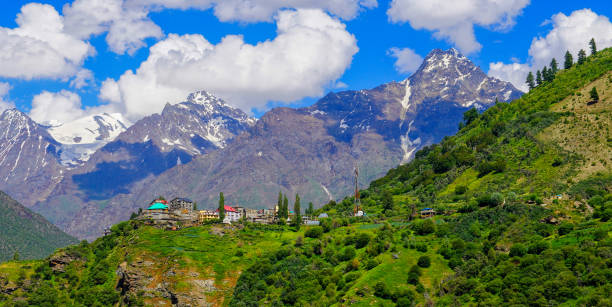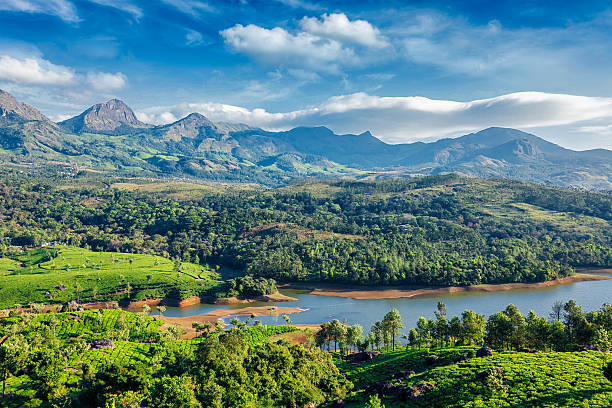The Best Time to Visit Manali: A Season-by-Season Guide
Nestled in the heart of the majestic Himalayas, Manali stands as one of India’s most beloved hill stations. With its snow-capped peaks, lush green valleys, and an array of outdoor adventures, it offers something for every traveler. The key to a memorable trip to Manali is timing. Each season paints this enchanting town in a different shade, offering unique experiences. If you’re wondering when the best time to visit Manali is, here’s a season-by-season guide to help you decide.
Spring (March to June): The Season of Blossoms and Adventure
Ideal For: Nature lovers and adventure enthusiasts
Spring in Manali is nothing short of magical. From March to June, the region transforms as flowers bloom, rivers flow with melted snow, and the lush green valleys are dotted with wildflowers. The weather during this time is pleasant, with temperatures ranging from 10°C to 25°C, making it perfect for outdoor activities and sightseeing.
The snow that blankets the town in winter begins to melt, revealing pristine landscapes. If you love trekking, camping, or mountaineering, this is the ideal time to explore the trails around Manali. Popular treks like the Hampta Pass and Beas Kund offer breathtaking views of the surrounding mountains, with clear skies and pleasant weather making for ideal trekking conditions.
Spring also brings the excitement of adventure sports. Solang Valley, a hub for outdoor activities, becomes a playground for adrenaline junkies. You can try paragliding, zorbing, and rock climbing. For those looking for a more relaxing time, the hot springs in Vashisht village provide a soothing retreat.
Why Visit in Spring?
- Ideal weather for outdoor activities
- Stunning views of blooming flora
- Great time for trekking and adventure sports
- Lesser crowd compared to peak summer
Summer (July to September): The Monsoon Marvel
Ideal For: Those seeking tranquility and off-season travel
While many people shy away from hill stations during the monsoon, visiting Manali between July and September can be a unique experience. The monsoons transform the region into a lush green paradise, with rain-washed landscapes that feel alive and vibrant. Waterfalls cascade down mountainsides, and the Beas River swells with rainwater, adding to the beauty of the surroundings.
The downside is that the rain can cause landslides, making certain routes treacherous, and outdoor activities may be limited. However, if you’re willing to embrace the rain, this is one of the most peaceful times to visit. You can explore the quieter corners of Manali, enjoy the mist-laden hills, and find solitude amidst the beauty of nature.
During monsoon, popular tourist spots like Hadimba Temple, Manu Temple, and Old Manali are less crowded. You’ll also find accommodation at lower rates, making it a budget-friendly option.
Why Visit in Summer?
- The beauty of rain-washed landscapes
- Fewer tourists, offering tranquility
- Budget-friendly rates on accommodation
- Ideal for relaxation and exploring local culture
Autumn (October to November): The Post-Monsoon Bliss
Ideal For: Trekkers and photographers
October marks the end of the monsoon season, bringing clear skies and a rejuvenated landscape. The temperature during autumn ranges between 10°C and 15°C, making it a comfortable time to explore Manali without the summer crowds. The air feels fresh, the valleys are lush and green, and the weather is just perfect for sightseeing.
For trekking enthusiasts, autumn is a fantastic time to visit. The high-altitude treks that may have been risky during the monsoon become accessible again. The Great Himalayan National Park, a UNESCO World Heritage Site, is a must-visit during this season. The park’s flora and fauna flourish post-monsoon, offering fantastic opportunities for nature photography and bird-watching.
Photographers will find autumn to be the ideal season to capture the beauty of Manali. The clear skies and vibrant landscapes create picture-perfect moments at every turn. Solang Valley, Rohtang Pass, and the surrounding areas offer spectacular views of snow-capped peaks and colorful valleys.
Why Visit in Autumn?
- Clear skies and pleasant weather
- Post-monsoon freshness in nature
- Ideal for trekking and nature photography
- Fewer tourists, making it a peaceful time to explore
Winter (December to February): The Snowy Wonderland
Ideal For: Snow lovers and honeymooners
If you dream of a winter wonderland, there’s no better time to visit Manali than in winter. From December to February, the town is blanketed in snow, turning it into a picturesque destination. This is peak tourist season, especially for honeymooners and families looking to experience snow. Temperatures can drop as low as -1°C, with daytime temperatures hovering around 10°C.
The snow-covered landscapes create a magical atmosphere that attracts tourists from all over India and abroad. Winter sports enthusiasts will be thrilled by the options available in Solang Valley. You can go skiing, snowboarding, or enjoy snowball fights with friends and family. If you’ve never experienced snow, this is the perfect opportunity to make snowmen or try your hand at skiing on the beginner slopes.
For couples, winter offers a romantic setting. Many hotels and resorts offer cozy rooms with fireplaces, providing a warm retreat after a day spent exploring. Manali’s winter beauty also makes it a popular destination for destination weddings and pre-wedding photoshoots.
If you’re looking to take it easy, a visit to Rohtang Pass offers sweeping views of the snow-clad mountains. Although the pass closes after heavy snowfall, the drive up to the point where it remains open can still be a highlight of your trip.
Why Visit in Winter?
- Experience the beauty of snow-covered landscapes
- Great for winter sports enthusiasts
- Romantic atmosphere for couples and honeymooners
- Bustling tourist season with plenty of activities
Choosing the Best Time for Your Trip
Ultimately, the best time to visit Manali depends on the experience you’re seeking. Spring (March to June) is perfect for outdoor adventures and pleasant weather. Monsoon (July to September) offers a peaceful retreat with rain-soaked landscapes and fewer tourists. Autumn (October to November) provides a post-monsoon freshness, making it ideal for trekking and photography. Winter (December to February) transforms Manali into a snow-laden paradise, perfect for snow sports and romantic getaways.
Each season offers a unique charm, ensuring that no matter when you visit, Manali will leave you with unforgettable memories. Just pack accordingly, plan your activities, and let the beauty of this Himalayan town sweep you away.




